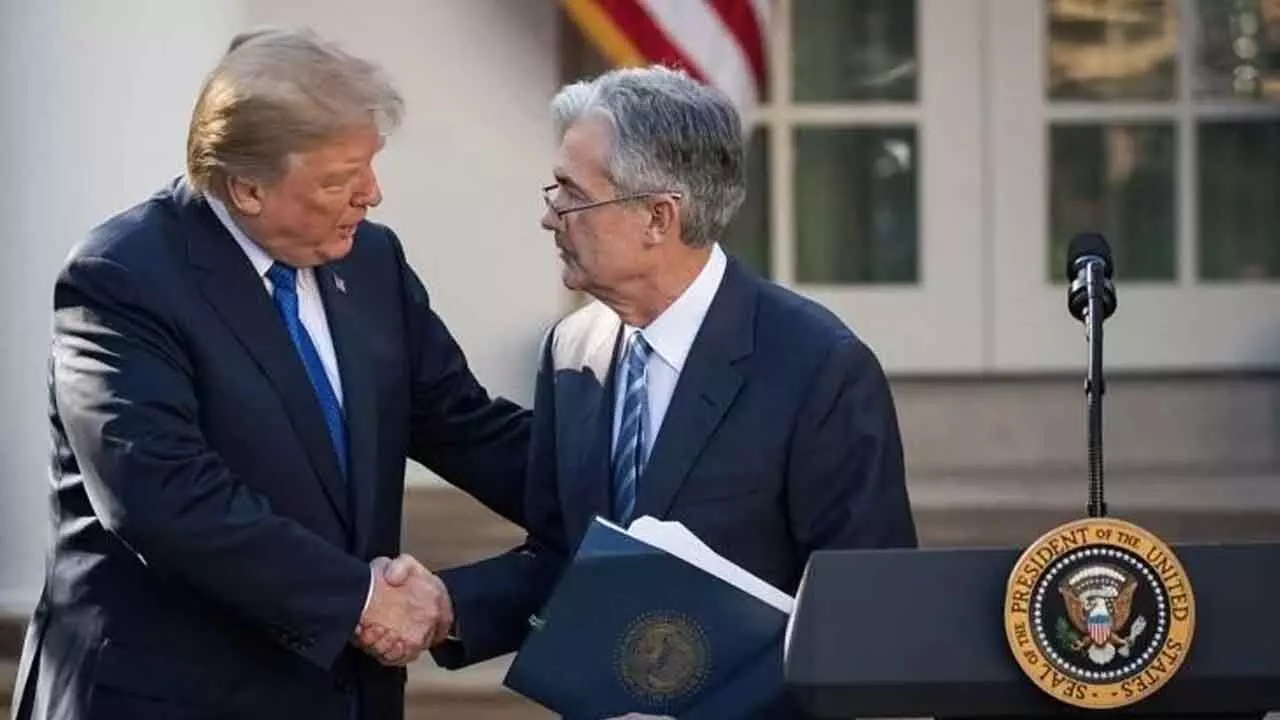All Eyes On Fed Reserve Meeting Amid Negative Growth Of US GDP
There is the risk of higher unemployment and lesser absorption of labour due to reduced economic activities
All Eyes On Fed Reserve Meeting Amid Negative Growth Of US GDP

In tune with the expectations, the Trump tariffs are already impacting US GDP growth which was negative in the last quarter. There is a fear that if the tariffs on imports from China, which is a major supplier of several items to USA, remains at the current high tariffs of more than 245% level even as there are no signs of trade discussion happening between the two major countries then this is likely to result in USA consumers postponing their purchases. This is certain to disrupt the supply chain and hit the US economy even more.
The question is also whether Washington will be able to finalise trade discussions within the 90 days pause and whether the more than 90 countries, which have approached for trade talks, will be in a position to get a mutually acceptable tariff levels. Are these countries willing to make compromises amid the current trade and non-trade barriers, particularly in areas like agriculture and the dairy sector, among others, which may hit domestic manufacturers in case any concession are made?
Donald Trump has come to the understanding that pain points will remain until these issues are sorted out as he was expecting only short-term pain. In fact, he went to the extent of stating that American children will have to be content with a mere two toys as against having the existing level of 30 toys as the cost of toys at the current level of tariffs will be beyond comprehension. This statement is an indication that luxury and discretionary spending has to be postponed in terms of affordability.
The other aspect is that inflation may rise and the demand vs. supply factors will result in a higher inflation. There is also a risk of higher unemployment and lesser absorption of labour due to reduced economic activities.
As US Federal Reserve Governor Jerome Powell had indicated earlier the impact of US tariffs are much larger than earlier expected as regards inflation and employment, which, incidentally, are two factors on which the Fed Reserve will bank upon for their rate decision considerations. It is to be watched how they will view these aspects during their crucial policy meeting on Wednesday. One has to wait for the meeting’s outcome as the decisions that are arrived at will one way or the other have a bearing on markets and its own economy that is already showing signs of slowdown. Moreover, there are bleak chances of any reduction in interest rates.
Although, Trump wishes to run a low interest rates regime, one has to see if Powell will oblige given the country’s current negative growth of 0.3 per cent. The latest PCE index (personal consumption expenditure index- measures consumer inflation) for Q1 shows a rise of 3.6 per cent, the highest since Q1 2023. Of course this does not mean that US is heading towards stagflation.
While hints of recession are being aired, JP Morgan and Goldman Sachs have warned that there is a chance of 25 per cent, 40 per cent and 60 per cent that US is staring at recession. Should this calamity happen, then one dreads to think of the impending impact on global growth, global equity markets and trade. Meanwhile, a good augury is that based on the first quarter results the US has not stepped into recession and it may have several revisions on both the sides. Moreover, recession will only crop up when there are two consecutive quarters of contraction in economic activity.
But it is sure that there may be a slowdown in US GDP growth. IMF has downgraded its forecast by 0.9 per cent point to 1.8 per cent in 2025, a full percentage point down from the 2.8 per cent growth in 2024 and by 0.4 per cent point to 1.7 per cent in 2026. The reasons that have been cited are policy uncertainty and trade tensions.
As most countries depend on their major trading partners like US, this will affect their domestic GDP growth depending upon the extent of their connectedness to US demand as regards exports. The slowing down of consumption and investment by US will affect the global equity market.
The dollar index, which recently showed signs of weakness, is currently nearer to 100 as it has gained as the latest job report signalled a cooling but still resilient labour market. According to Trade Economist global macro model and analysis expectations, the US dollar is expected to trade at 100.78 by the end of this quarter.
The bond markets in US have already priced in concerns that these trade policies could slow the economy. The current 10 year US treasury is at 4.308 per cent. The market is expecting a favourable policy from the US Federal Reserve Governor on Wednesday, especially if he will factor the negative growth of Q1 as the market expects 100 basis reduction in US reference rates in the current year.
Will there be a fundamental shift in the future trade order and what are the likely implications on global trade and world economic growth will have to be weighed in. These will definitely have short term impact on the growth of almost all countries. Markets like equity and bond will show signs of volatility.
Hopefully, these are temporary impacts and solutions will be arrived at and there would be amicable settlements of the existing trade uncertainties. If things work out in this way, one is sure that the global growth impact will be restricted and would be at bare minimum.
(The author is former Chairman & Managing Director of Indian Overseas Bank)

